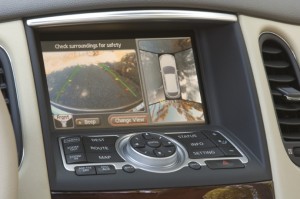Rear View Cameras Coming to a Car Near You
 As part of an effort to reduce driving accidents and injuries, a new law will require all passengers cars and buses to feature rear view cameras. The cameras, available as an option on some car models, allow drivers to see behind them through a small, LCD screen embedded in the dash or rear view mirror. Most commonly, the feed is incorporated into an existing, on-board GPS system.
As part of an effort to reduce driving accidents and injuries, a new law will require all passengers cars and buses to feature rear view cameras. The cameras, available as an option on some car models, allow drivers to see behind them through a small, LCD screen embedded in the dash or rear view mirror. Most commonly, the feed is incorporated into an existing, on-board GPS system.
As many as 207 people are killed, and more than 15,000 are injured from what are known as “back over” crashes, where vehicles drive in reverse over their victims. Most often, victims of the accidents are children who weren’t tall enough to be seen from the top view of a traditional rear view windshield mirror.
In 2002, a two-year-old boy, Cameron Gulbransen, was killed in New York when his father, who failed to see Cameron in the rear view mirror, ran him over. Six years later in 2008, Congress passed the “Cameron Gulbransen Kids and Car Safety Act” which required new safety laws governing the rear-view of passenger vehicles.
Two years after passage, the Transportation Department has recommended a proposal that would require all new passenger cars, trucks, vans, and buses to install rear view cameras on the back of each new vehicle by September 1, 2014. The law is not retroactive.
Blind zones, powered windows, and the safety of sensitive automatic transmission gear shifters, were also addressed as part of the bill, but no recommendations have yet been made by any regulatory agency.
Analysts say the new cameras could cost anywhere from tens to hundreds of dollars, with the most costly systems costing up to $200 each. Much of the cost depends on existing designs. Cars with built in navigation systems complete with large screens can be used to show both the GPS navigation and rear view camera, saving automakers money. Cars without on-board navigation, however, will require both cameras and a small viewing screen.
Automakers were relatively pleased with the proposal, even if there were some lingering concerns that additional costs could not be passed on to consumers. Lobbyists and trade groups who represent the American automaking industry rarely challenge new safety requirements, instead caving to the obvious public popularity that makes reversing decisions both difficult, and costly to their brand.










